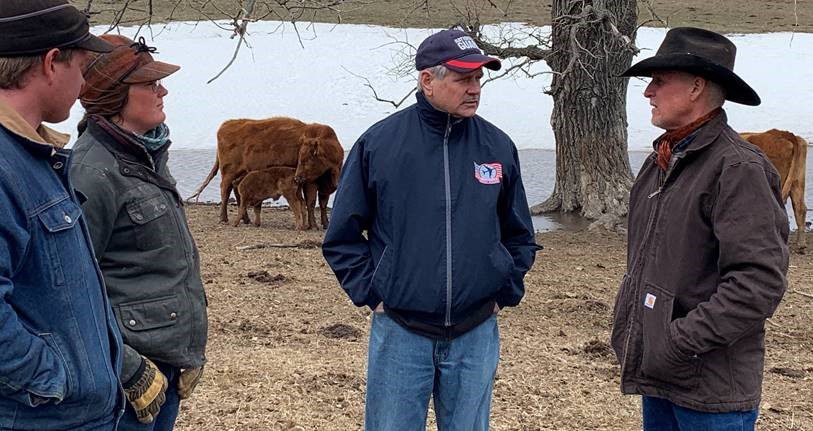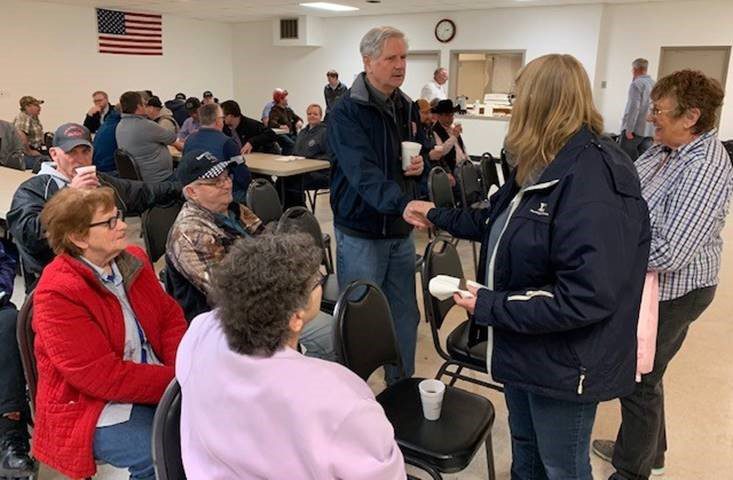

MAX — U.S. Senator John Hoeven reviewed the impacts of recent severe weather on North Dakota’s livestock producers, communities and rural utilities yesterday. The senator visited a family-owned ranch near Max to learn firsthand about the damages and met with ranchers, local leaders and a representative from McLean Electric Cooperative to discuss available assistance.
This includes the following programs that Hoeven worked to secure and strengthen, which are both helping address the impacts of last year’s historic drought and will also provide a needed lifeline to producers impacted by recent storms:
In addition, Hoeven is coordinating with the state on the disaster response and is working to get assistance for downed power lines. This includes securing assistance through a federal disaster declaration and the Federal Emergency Management Agency, which would help cover repair costs and mitigate the impacts of future disasters.
“These recent spring storms are a real challenge for our ranchers, hitting them right during calving season and threatening the health of their livestock,” said Hoeven. “Not only did this disaster follow a historic drought, but the storms brought widespread power outages, making this situation even more challenging and creating a hazardous situation for people both on and off the ranch. This meeting is about ensuring ranchers can access the assistance that we’ve worked to make available, including the disaster aid we passed last year, as well as the Livestock Indemnity Program. We appreciate this opportunity to hear firsthand from ranchers, local leaders and representatives from McLean Electric Cooperative as we work to help communities recover.”

Securing ELRP
Hoeven worked to secure $750 million for livestock producers as part of $10 billion in disaster aid, which also includes $9.25 billion in disaster funding to aid row crop producers who suffered losses due to droughts, hurricanes, wildfires, floods and other qualifying disasters in calendar years 2020 and 2021. USDA will provide that assistance using existing crop insurance data in a two-phase approach as well, beginning this spring.
To be eligible for ELRP, livestock producers must have suffered grazing losses in a county rated by the U.S. Drought Monitor as having a D2 (severe drought) for eight consecutive weeks or a D3 (extreme drought) or higher level of drought intensity during the 2021 calendar year, and have applied and been approved for 2021 LFP. USDA expects to distribute more than $577 million through ELRP phase one. Phase two will begin later this year.
Producers should contact their FSA county office or visit farmers.gov for more information.